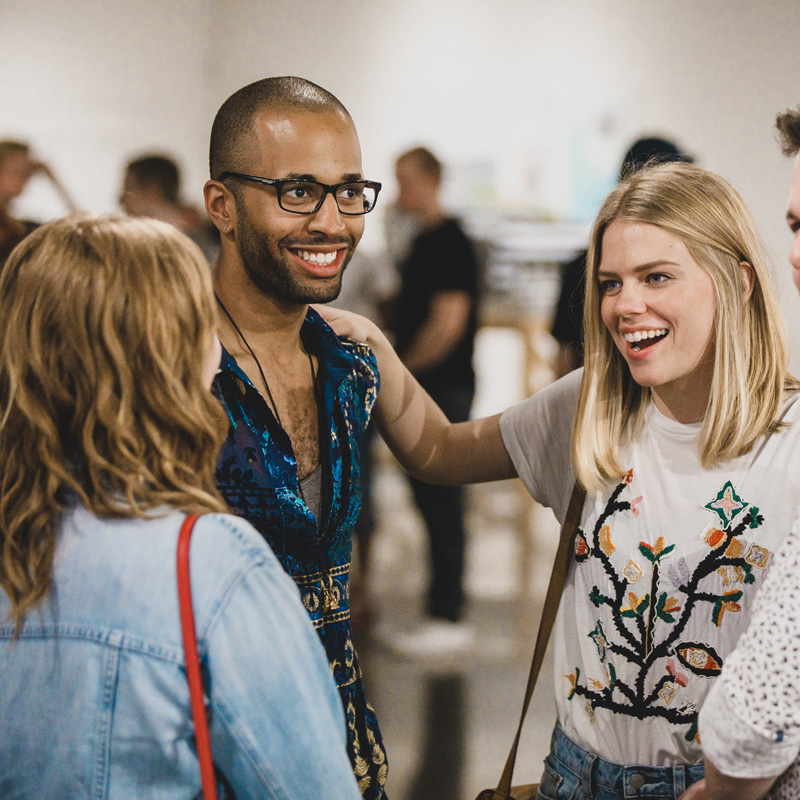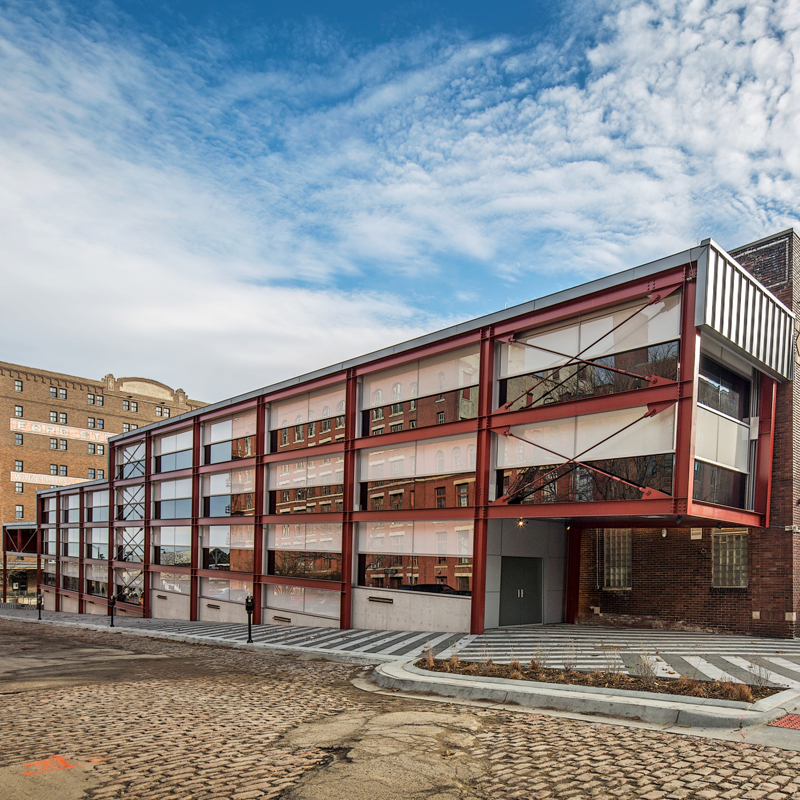Browse all current and upcoming events, exhibitions, performances, lectures, and educational workshops exploring creativity from all angles.
Delve deeply into topical explorations with our seasons, collections of exhibits, performances, lectures, and educational workshops centered on a central notion.
Browse all past programs supporting our mission of exploring the creative process and seeing things differently.
Browse all programs for exhibitions featuring item-based creative endeavors.
Browse all programs for performance pieces showcasing live creativity in action.
Browse all programs focused on guest lectures covering wide-ranging topics in the artistic and creative fields.
Browse all programs related to educational workshops, classes, and conferences, bringing hands-on enlightenment to creative topics and crafts.
Pamela Conyers-Hinson moves through the world investigating and experimenting. Often this work is done through the use of discarded and forgotten materials, the shared stories of women of color, or the magnification of a subject’s journey. Nothing embodies this more than her mask work: the physical and intellectual relationship developed between artist and subject through touch and conversation as the material is applied, and the manifestation of a face whose ancestral facial features are embellished and elevated by the artist through hand-painted design.
Most of the work in this exhibit was completed between 2018 and 2020 and some pieces were made at KANEKO; all are infused with questions, vulnerability, and disruption. Conyers-Hinson’s use of multiple mediums: wood, bronze, marble, alabaster, clay, and textiles, represents the diversity of her subject matter and the intimate and tactile ways she engages with her audience and her community.
Conyers-Hinson holds a Masters of Arts in Teaching and Organizational Leadership and a BA in Studio Art. She is a classically trained sculptor using the lost wax method for bronze casting and traditional methods for stone carving and her interest in sustainability within the arts is evident by her use of experimental natural mediums. She received the Council of American Art Society Inc. Award for Excellence in Representational Sculpture and was a 2018 Fellow at The Union for Contemporary Art in Omaha, NE. She has taught art all over Nebraska: in rural communities with exhibitions from the Sheldon Museum of Art, for Joslyn Art Museum, and in after school programs focused on underserved populations. Conyers-Hinson has exhibited artwork in New York, Illinois, and Virginia, is a member of the National Association of Women Artists (New York Chapter), and recently published a book of artwork focusing on capturing ancestral facial features titled “Expressions of Black Heritage Through 50 Faces.”
What I am creating is called a “Life Mask” simply because my models are alive. The process of mold making can be a scary journey for some. For others, it’s the equivalent of getting a deep facial. One thing I have learned during this process is that it rests on a foundation of trust and intimacy. I have to quickly gain the trust of my models. I have to explain my process in a way that my models trust me enough to step out of their comfort zone and relax. Intimacy is obtained not only through tacticity but also through the whispered sharing of stories. These are stories that one would not normally share with someone that falls under the umbrella of “stranger.” But by giving me permission to enter your personal space, we have become part of each other’s journey. I am touching your face while applying a thin layer of Vaseline. I feel the history of teenage acne, the physical and sometimes emotional scars of past traumas. This gives me your approval and for whatever reason, it is ok for me to be in your space.
I always meet with the models sometimes days before or hours before explaining my process step by step. I want to make sure that the model is as comfortable as possible. The model will lay down on a table covered with pillows and there is always music playing in the background. The music will give the model something to focus on during the mold making process. It is important that the model knows that even if it appears like they do not have control over the process they do. They can stop me at any point. I discuss signals to determine where the model is emotional during the mold making process. I explain the purpose of the application of Vaseline (release agent) and how the pieces of straws will extend the length of the nasal passageway. The pre-cut template out of foam board will fit around the model’s face. Any gaps around the face will be sealed with duct tape. This will prevent the plaster from flowing down the sides of the face into the hair. Throughout the process, I am talking to the model. I am checking for non-verbal cues; like a change in breathing patterns. This could be an indicator that the model might be getting anxious.
With straws in hand, the model is guided to the table and lays down. I make sure that all of the pillows are in place to ensure the model’s comfort. Once the application of the release agent is complete, I mix the water and molding plaster. With the template and tape in place, I check the model for comfort once again. I begin applying the now thickened plaster. During the application, I’m explaining that the plaster will go on feeling cold. I always start the application process around the edges of the face and work my way inward. I always announce the next application location. Normally, it is at this point that I tell the model to insert the straw pieces into their nostrils. I explain again that once the plaster is over their eyes, light is no longer visible. The last place I apply plaster is the area between the upper lip and between the nostrils. At this point, the signal is thumbs up or thumbs down. I am still talking to my model and giving an updated timeframe for the removal of the mold. I explain to the model that the plaster will begin to warm up as it is setting. I tap the mold to determine if it is ready for removal. Once the mold is ready, I inform the model. I begin by removing the straws from the model’s nostrils and then I pop off the mold. I instruct the model that the eyes must remain closed until I clean the area around the eyes. The next level of trust and intimacy begins as I begin the process of hand washing the model’s face. Once the model’s face is clean, the model can view the plaster mold.
KANEKO asks that all guests wear a mask when visiting our spaces, with no reservations needed.

Your KANEKO membership supports and promotes creativity, transforming lives and freeing human thought. Make imagination come to life and creativity possible by joining KANEKO today!
Learn More
KANEKO is located in three turn-of-the-century warehouses in historic Old Market District in downtown Omaha, NE. Public street, meter, and garage parking is available on the blocks surrounding KANEKO and throughout the Old Market.
Learn More
KANEKO relies on people like you in order to provide world-class exhibitions, programs, events, and workshops.
Learn More